Little water in the well: the reasons for this situation and
We need wells not only where there is no centralized water supply. They generously and free of charge irrigate gardens and vegetable gardens in country houses, supplying us with natural drinking water in private households. But what to do - if there is not enough water in the well?
The consequences of lowering the water level in our natural source are troublesome. This situation requires the immediate restoration of filling in our natural reservoir by any known effective means, but preferably less laborious and costly.
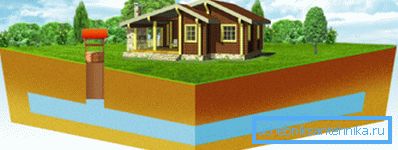
Causes of Drying
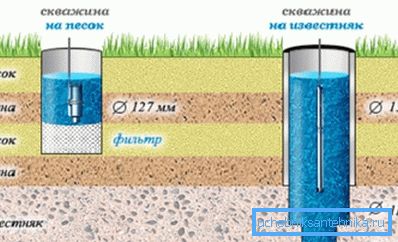
To begin with, we will precisely determine why there is not enough water in the well. It is known that the aquifer is usually located under a 2-meter layer of clay, so we will dig 1.5 m of clay with a drill, then another 0.5 m of soil.
Now we have 1 m of water to a wet formation plus the thickness of it and plus the natural rise of water during its accumulation. This is the required 1-1.5 m, and it remains only to see the result - will the water increase or not.
Just finding out why there is not enough water in the well, we will correct the situation.
- The reason for the drying of 80% of wells: during the drilling did not go deep enough, they did not reach the abundant aquifer.
- The natural factor of drying of these natural reservoirs are anomalous droughts with extremely rare and very weak precipitation.
Tip! The popular method of deepening is most acceptable - it is economical and efficient. We will also use them if there is a shortage of water volume, a decrease in inflow over 1 day, frequent drying out or revival of a dry old well.

- There are other reasons for increasing the already existing depth of the source: its clogging, deformation of the shaft, replacement of well rings (the price of structural elements depends on the strength).
Remedies
Regardless of the type of such source (tubular it or mine) it is necessary to deepen the lower part of the trunk, because it is here that the life-giving moisture is collected. On average, this section of the well is 2 m and is reinforced with durable material.
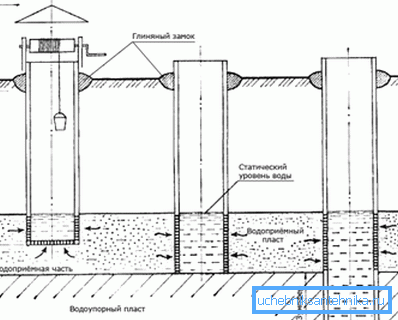
Sump recess
The bottom of this water intake in case of depletion of the aquifer and insufficient filling of the well, we will simply dig below and arrange a sump.
Now this sump under the barrel is located inside the impermeable formation, from which the reservoir is much more intense, faster filled:
- The deepening is done only once and immediately to the maximum possible distance - into 3 rings.
- If we descend to the bottom, we will find there a sucking bog, which means that we will not dig for long, especially since it is very difficult because of the continuous intake of moisture.
- Constant pumping pump speed up the work. At the same time scoop and thick slurry.
- We dig at the fastest and uninterrupted pace so that the rings do not twist and do not violate the verticality of the mine. At the time we need only physical endurance, not experience and qualifications.
- Overnight, our in-depth reservoir will fill up - and we can decide if there is enough water or we need to continue working.
Consideration of soil features
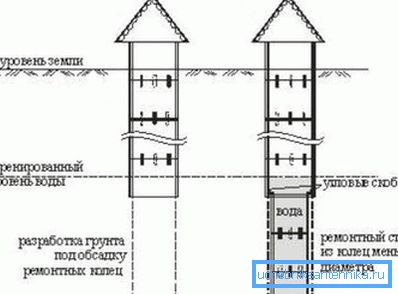
We use the methods of deepening wells, taking into account the composition of the aquifer soil, as well as the state of the trunk itself.
- On the clay in the excavated recess, we will put vertical rings along the diameter narrower than the original upper stem rings. For example, we use rings not meter in diameter, as the main ones, but smaller by 20 cm. If the trunk is deformed, apply a ring 0.7 m in diameter.
- On sandy soils it is more expedient to use a piece of plastic pipe 0.9 m in diameter, and in a curved mine - 0.7 m.
As you can see, this instruction is quite understandable, and a reliable safety net contributes to the rapid and successful completion of such extreme work. By the way, the technology of installing new rings or pipes for lowering the bottom also depends on the ground conditions:
- in dense aquifer soils do the deepening without casing - put reinforced concrete rings in the dug hole;
- in the sandstones of quicksand we start up a casing and a shield.

The size of the recess is influenced by the following parameters:
- soil density;
- its composition;
- ability to hold vertical;
- the level of occurrence of the underground channel;
- water debit at the bottom of the well.
The specialist will be easier to assess the situation, besides, he will be able to maintain the hydrogeological conditions of our well and guarantee its timely and sufficient filling. However, we will begin this responsible work with the installation of additional brackets in the seams between the rings in order to eliminate the rupture of the trunk when the bottom is deepened.
Independent work
If water has disappeared from the well, we will monitor similar sources from our neighbors - they probably have the same story, and drought or frost is to blame. But if this problem is only with us, let’s wait a week: a slight fluctuation in the soil may have occurred.
The best time for the planned deepening is in the middle of autumn, when the groundwater is at the bottom.
Looking for 2 assistants:
- it is necessary to simultaneously pump the water downhole pump;
- and quickly remove the ground up.
- We dismantle the house above the well, freeing access to the well.
Phased well cleaning
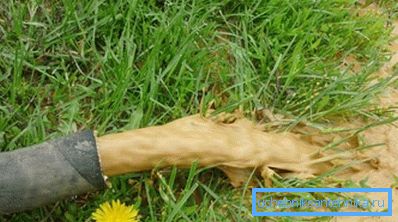
- We will fix the seams between some rings with simple reinforcement - 2 metal plates per 1 seam, fixing with anchor bolts. But in the presence of quicksand we will process all the seams.
- Additional braces on the first two rings will help prevent the upper ring from shifting in winter.
- Clean the bottom of silt with a shovel and bucket.
Ways of deepening
Let us proceed to the deepening of the well in one of the following effective ways.
Mechanized

- In a metal or plastic pipe with a diameter of 1 m, we make 50 holes with a 20 mm drill bit.
- Inside the pipe we will fix a fine stainless steel mesh.
- Put the pump in the pipe.
- With a drill we make a 1-meter hole in the bottom of the well.
- We get there a prepared pipe so that it is not flooded from above.
- We pump out the dirty water, thereby freeing the way for the inflow of fresh water from the aquifer.
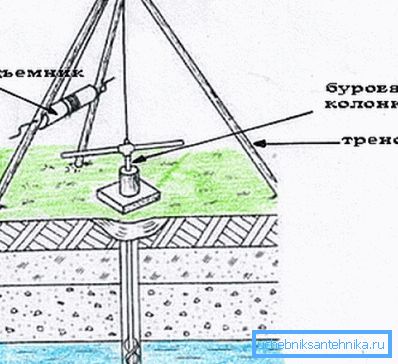
Undermining
- This method is simpler, but harder - it is already described above: at the bottom of a shovel we dig the soil into buckets and lift it up.
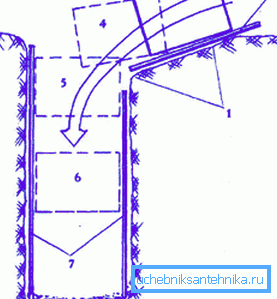
- When the bottom ring goes down, we put a new one on top.
Tip! Undermining should be quickly, but evenly, gradually from all sides, so it is often more likely to change places with a partner.

- With the rapid flow of water we finish the work, still observing safety precautions (it is better to wear a construction belt).
- To deepen the 10-meter well should invite professionals.
Finishing cleaning work
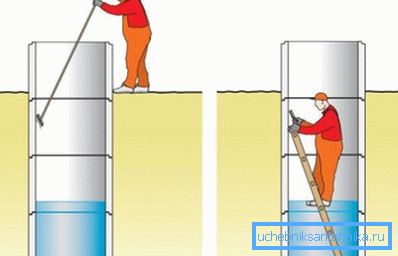
- Seal with liquid glass and cement joints, potholes, we can also apply waterproofing.
- Fill up to 15 cm bottom with coarse gravel for water purification and soil strengthening.
- Already after a thorough revision of the old and reliable fastening of the new rings with anchor bolts, we will disinfect the inner walls with sodium hypochloride, intended for drinking water supply.
- You can manually clean the entire surface of the inevitable plaque.
Conclusion
The well is a major hydraulic engineering device and the complex, which retains its durability even during ground movements, will help to prolong its impeccable service:
- column reinforcement;
- removal of water lifting equipment;
- prediction on the potential of the layers.
On the type of soil depends on the method of correcting the defect:
- in dense soils we dig in the open way, without casing;
- floating soils require enhanced strengthening of the vertical of the well.
An accurate calculation of the optimal depths can be made by a specialist. The deepening carried out according to the rules listed above is guaranteed to ensure a constant flow of pure natural water for half a century. And looking at the video in this article, we will clearly see that our problem is solved.